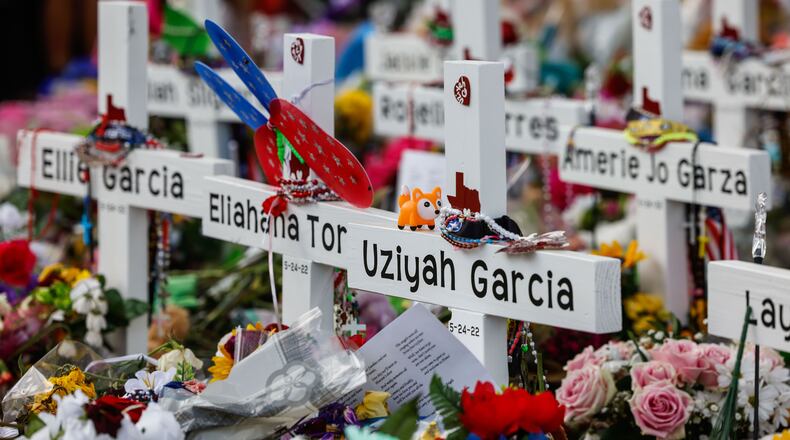Beth Collums is an Atlanta-based writer who has a professional background in child and family therapy and often writes about the intersection of mental health, relationships and education. You can find more of her work here.
A parent of four, Collums writes about keeping kids safe from car crashes, once the leading cause of death among children. In a guest column, she laments that the death toll from car accidents has been surpassed by gun deaths among America’s children and teens.
By Beth Collums
I took the last of my children’s booster seats out of the car last week. As the crusty bits of Goldfish crackers cascaded into the driveway, it felt like a victory of sorts, a small success against spilled sippy cups and upholstery embedded stale Cheerios. My victory was short-lived, though, when I saw the new statistics on firearms and child deaths released this month.
Are bulletproof vests to be part of childhood’s safety inventory, alongside booster seats? Car accidents, once the largest threat to our children’s lives, have now been surpassed by guns in deaths of those under 18. When new parents used to go to the store to buy the safest seat for their children because of the dangers of driving, now they’re left wondering how to protect their kids from firearms.
Credit: Contributed
Credit: Contributed
A new report from the medical journal Pediatrics analyzing data from recent Centers for Disease Control and Prevention surveys and mortality statistics finds firearm fatalities are now the leading cause of accidental death in children. Firearm fatalities among children rose by 87% from 2011 through 2021, according to the report.
What is going on when death by guns is at the top of the list for our youth? How do we as parents and teachers respond to such news that seems so distant, but so close to the heart?
We’ve seen the waves of gun violence plague our culture the last few years with local headlines about children killed by stray bullets from drive-by shootings when in their home, in their cars, Christmas shopping with family, outside of a family skating rink and at a high school football game. These are only the ones we hear about in the media; sadly many go unnoticed by society at large and are grieved only by their close family and friends.
Their loss must be heard.
Aside from firearms legislation reform for assault weapons and increased penalties for gun violence, what can we do as adults to protect our children from these atrocities?
The study showed the deaths are correlated to areas of high poverty levels and most common when a firearm is present in the home. In fact, the study showed 30 million American children live in homes with firearms. When there are guns present in the home, danger looms close and the rate of incidence increases.
Parents, teachers and caregivers must practice and teach gun safety. Gun safes and reliable locks are utmost in gun safety for children. Since handguns are illegal to purchase under federal law until the age of 21, children and teens are getting their hands on adults’ guns. It’s usually handguns, one of the least likely firearms to be stored in appropriate gun safes.
Parents, aunts, uncles, grandmothers and teachers can help educate kids that a gun doesn’t mean power, “rizz” or domination; it means danger is present, even if the original intent is not dangerous. As with burners on a stove, kids should be taught to always associate guns with extreme levels of caution. Needing a gun to feel respected reveals a deeper need for dignity and worth. In parallel, needing a gun to feel safe shows glaring holes in societal trust and basic rights of civil protection.
Concealed carry laws in Georgia allow the freedom to have guns in public spaces, which makes it that much more important for kids to be taught to speak up if they see firearms that scare them or make them uneasy.
According to the study, the burden of pediatric firearm death has disproportionately affected communities of color. Black children have significantly higher rates of firearm mortalities overall, and there is a greater frequency of pediatric firearm homicides in Southeastern states.
The study also found about 30% of the pediatric firearm deaths in 2021 were suicides. If kids and teens who are struggling with depression, anxiety and other mental illness along with suicidality have access to firearms, the risk is compounded. Guns give suicide a final answer to a temporary problem, exacerbated by an ongoing crisis of suicidality among teens and a historical peak of suicide rates by guns. If there are kids dealing with thoughts of worthlessness and hopelessness in the home, keeping guns locked away is lifesaving.
Our kids need a start to life without the burden of gun violence. They face enough pressure from school work, catching up on math and reading from pandemic learning gaps and fending off social media comparisons. It’s our job as adults to shield and coach our kids through the harms of the world, which have become more complicated now than deciding which car seat to buy.
About the Author
The Latest
Featured




